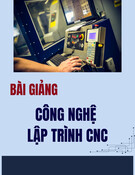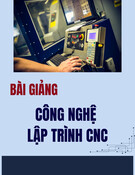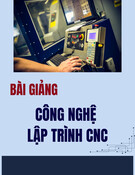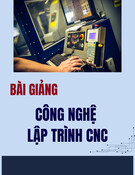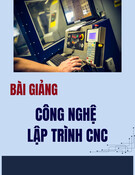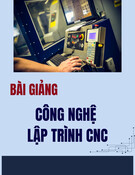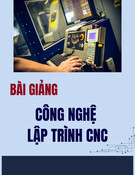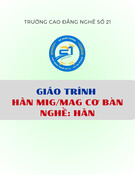
http://www.iaeme.com/IJMET/index.asp 1285 editor@iaeme.com
International Journal of Mechanical Engineering and Technology (IJMET)
Volume 10, Issue 03, March 2019, pp. 1285–1300, Article ID: IJMET_10_03_131
Available online at http://www.iaeme.com/ijmet/issues.asp?JType=IJMET&VType=10&IType=3
ISSN Print: 0976-6340 and ISSN Online: 0976-6359
© IAEME Publication Scopus Indexed
FATIGUE PERFORMANCE OF THERMAL
SPRAY COATINGS ON CARBON STEEL: A
REVIEW
M. A. M. Halmi
Faculty of Mechanical and Manufacturing Engineering,
Universiti Tun Hussein Onn Malaysia (UTHM), 86400 Johor, Malaysia
M. A. Harimon
Faculty of Mechanical and Manufacturing Engineering,
Centre for Technology Oil & Gas, Teaching Factory,
Universiti Tun Hussein Onn Malaysia (UTHM), 86400 Johor, Malaysia
L. Mohd Tobi
Centre for Technology Oil & Gas, Teaching Factory,
Universiti Tun Hussein Onn Malaysia (UTHM), 86400 Johor, Malaysia
M. F. Mahmod
Faculty of Mechanical and Manufacturing Engineering,
Universiti Tun Hussein Onn Malaysia (UTHM), 86400 Johor, Malaysia
ABSTRACT
This paper contributes to a review of the research of the fatigue behaviour of
thermal spray coatings on carbon steel. Previous studies provide the experimental
characterization of the fatigue resistance of coated carbon steel. Different coating
powders were deposited to a different type of carbon steels. Also, S-N curves were
drawn from axial- and rotating bending fatigue test to determine the fatigue strength or
fatigue limit of the samples. Thermal spray coatings showed great improvement to the
work hardening effect but worsen the fatigue life due to the inclusion of oxide and pores,
the presence of stress concentrators, and high microcrack density. Moreover, the effects
of the surrounding environment have also resulted in pros and cons towards the fatigue
strength. An improvement, however, can be done with the shot peening treatment, which
significantly increases the compressive residual stress at interfaces of
coating/substrate. The high compressive residual stress could delay the crack
nucleation, thus increasing the fatigue life of the coated part.
Key words: Carbon steel, Coating, Fatigue, Thermal spray

Fatigue Performance of Thermal Spray Coatings on Carbon Steel: A Review
http://www.iaeme.com/IJMET/index.asp 1286 editor@iaeme.com
Cite this Article: M.A.M. Halmi, M.A. Harimon, A.L. Mohd Tobi, M.F. Mahmod,
Fatigue Performance of Thermal Spray Coatings on Carbon Steel: A Review,
International Journal of Mechanical Engineering and Technology 10(3), 2019, pp.
1285–1300.
http://www.iaeme.com/IJMET/issues.asp?JType=IJMET&VType=10&IType=3
1. INTRODUCTION
Application of thin film of functional material to an object (usually referred to as the substrate)
is known as a coating process. The functional material may be solid, liquid or gas; organic or
inorganic; metallic or non-metallic. In many cases, coatings are applied to improve the surface
properties of the substrate [1]. Composite coating innovation primarily has been created to
satisfy the mechanical requests for coatings whose details surpass the capabilities of customary
coating innovations, which are able of working in extreme environments and within the
confront of challenges postured by temperature, corrosion, abrasion, fatigue, friction, and
erosion [2]–[4]. Nowadays thermal spray coatings have been broadly applied to improve
functions such as wear resistance, corrosion resistance, bioactivity and dielectric properties to
light metals. The characteristics of the deposition process, including splat cooling and
successive stacking of splats, create coatings of unique microstructure which are different from
conventional materials [5]. The common processes of thermal spray are arc spray, flame spray,
high-velocity oxy-fuel spray, and plasma spray.
High-velocity oxygen fuel (HVOF) spraying is widely utilized in groups of thermal
spraying and it has been extensively used for tungsten carbide (WC) feedstock powder in order
to obtain good bond strength, higher density, and less decarburization. This is because of the
lower temperature and higher velocities experienced by the powder particles as compared to
other thermal spray technique like vacuum/low-pressure plasma (VPS/LPPS), and atmospheric
plasma (APS) with a higher temperature around with lower velocities [6]–[11]. However, the
effect of the coating on the fatigue performance influenced the acceptance of thermal spray
coatings in many applications. When a structure is loaded, a crack will be nucleated (crack
nucleation) on a microscopically small scale, this crack then grows (crack growth), then finally
complete failure of the specimen [12]–[17].
The factors causing fatigue failure can be divided into basic factors and additional factors.
For the basic factors are a high maximum tensile stress value, a large amount of variation or
fluctuation in the applied stress, and a sufficiently large number of cycles of the applied stress.
While for the additional factors are stress concentration (geometry), corrosion (environment),
temperature (environment), overload (loading), metallurgical structure (material), residual
stress (manufacturing) and combined stress (loading). One of the factors that influence the
fatigue life of thermal spray-coated components is the residual stress in the coating. It was found
that there is a direct relation between the residual stress in the coating and the fatigue life of the
coated part. Fatigue life can be changed by a factor of ten due to the level of compressive
residual stress in the coating [18]–[21]. On the other hand, surface defects (such as roughness
or scratches and notches or shoulders), corrosion and galling (due to rubbing of mating surfaces)
may reduce the fatigue strength of the coated part [12].
This work focuses on the main results available in the literature on the fatigue behaviour of
thermally sprayed carbon steel. In actual fact, the current development of coating technique
rises significantly to fulfil industrial demands in the best possible ways. Also, the possibility to
withstand in extreme environments and in the challenges posed by fatigue, temperature,
corrosion and abrasive is expected to become more and more dominant. From these
perspectives, the utilization of thermal spray coating having a better performance than those of

M.A.M. Halmi, M.A. Harimon, A.L. Mohd Tobi, M.F. Mahmod
http://www.iaeme.com/IJMET/index.asp 1287 editor@iaeme.com
traditional coating would be recommended for a number of applications. Therefore, to achieve
significant results, numbers of research studies would be necessary.
2. THERMAL SPRAY COATINGS PREPARATION
2.1. Material selection
Material selection is very significant due to their benefits and limitations. In this paper, carbon
steel will be reviewed as a fixed substrate with different coating powder characteristics
functioned to protect the metal substrate. Every coating powder has its own benefits toward
improving the substrate's characteristics. In [22], [23] the coating powder comprised of cobalt
element, which acts to provide a ductile metallic binder for hard carbide particles. Besides that,
cobalt can also help the coating powder to achieve a high density of deposition as its wetting or
capillary action during liquid phase sintering. In the study [9], [24]–[30], the coating powder
comprised of nickel element, which acts to improve the corrosion and oxidation resistance of
the substrate. However, nickel does not wet the WC particles as effectively as cobalt, resulting
in low strength, hardness and wear resistance.
2.2. Substrate and specimen preparation
For material preparation, metal substrate was first grounded and polished using SiC sandpaper
with 60 to 200 grit range [22], [23], [27], [30]. Then the substrate will be quenched from 815
℃ - 845 ℃ for 45 minutes and cooled in oil (20 ℃). After that, the substrate was tempered in
the range of 220 ℃ to 260 ℃ for 2 hours and then it will be cooled in the air [22]–[25], [28].
Fatigue specimens were then machined and sectioned according to the ASTM-E466 [9], [22]–
[30]. To reduce residual stress induced by machining, the specimen underwent stress relieving
heat treatment at 190 ℃ for four hours [22]–[25]. Before coating deposition, the substrate
underwent a grit blasting process, which main purposed to generates surface roughness ensuring
mechanical anchoring between coating and substrate surface. Grit blasting process can be
inputted with different alumina size, pressure and distance, which produce variable significant
surface roughness. Also, this process will help to remove any contaminants on the surface of
the substrate before coating deposition taking place [26], [27]. Optionally, the surface
roughness of the substrate will be kept constant to prevent any cause on the fatigue strength due
to low/high bonding between substrate and coating.
2.3. Coating deposition
Nowadays there is plenty type of coating guns/ machines used to thermally spray the coating
powder to the substrate. For instance, Jet Kote thermal spray system [22], [23], JP-5000
HP/HVOF spray system [22], [23], JP-5000 TAFA 1310 VM Technologies [24], [25], [28], and
Praxair-TAFA JP-5000 gun [26], [27]. Furthermore, the coating parameter such as powder
feeding rate, the distance of the spray, number of coating's layer, oxygen pressure, fuel pressure,
air flow, fuel flux, oxygen flux, etc. play important roles for the result of coating deposition.
The change of the parameter could possibly affect the properties of the specimens. On the other
hand, the coating thickness and surface roughness of the specimens must be kept constant. The
coating thickness was kept constant at 100-150 µm in [22], [23], [28], and at 170 µm in [24].
In [22], [23], surface roughness of the specimens was 4 µm, and 6.4 µm in [26].
2.4. Fatigue test

Fatigue Performance of Thermal Spray Coatings on Carbon Steel: A Review
http://www.iaeme.com/IJMET/index.asp 1288 editor@iaeme.com
Fatigue tests can be conducted under different types such as axial fatigue test, rotating bending
tests, etc. Figure 1 (a) and (b) show examples of fatigue specimens that have been used in
fatigue testing. In [22]–[25], [27], [28] axial fatigue test was conducted with a sinusoidal load
type and a load ratio of R = 0.1 while in [22], [23], [26] rotating bending test was conducted
with a sinusoidal load type and a load ratio of R = -1.0. The load frequency used was varied in
the range of 10 - 50 Hz [22]–[28]. The fatigue test underwent commonly under room
temperature but it can be varied depending on the aim of the test. The result of the test will
produce a set number of cycles from each different variables in the same stress. As a result of
that, an S-N curve was produced which provided the fatigue strength data at 106 to 107 load
cycles.
After fatigue tests, fractographic analysis of the fractured surface of the specimens was
taken place using a scanning electron microscope (SEM) machine. The aims of the
fractographic analysis were to characterize the failure mechanisms that took place during
fatigue tests. In particular, they were to identify the fatigue crack nucleation sites and determine
the mechanisms of crack propagation.
(a)
(b)
Figure 1 The specimen of fatigue tests, (a) Rotating bending fatigue testing
specimen, and (b) Axial fatigue testing specimen [23].
3. FATIGUE BEHAVIOUR OF THERMALLY SPRAYED CARBON
STEEL
A thorough collection of recent experimental results for fatigue tests on coated samples is
outlined in this section. These works have been focused on fatigue behaviour of thermal
spraying coating on carbon steel. The main results are summarized in Table 1, 2, 3, 4, 5 and 6.
3.1. Fatigue behaviour of WC-Co thermal spray coating
Souza, Nascimento, Voorwald and Pigation [22] studied the effect of WC-17Co thermal spray
coating by HVOF and hard chrome electroplating on the fatigue life and abrasive wear
resistance of AISI 4340 high strength steel. Analysis of the experiment showed that both coating
process (HVOF and electroplating) decreased the fatigue life of AISI 4340 steel. However, a
significant fall in fatigue strength associated with the steel coated by chromium electroplating
compared to the WC-Co thermal spray. The reasons are due to the high tensile residual stresses,
high microcrack density and strong adhesion coating/substrate interface, which allows the
passage of fatigue cracks from coating to the substrate.
Table 1 Some results from fatigue tests of WC-Co thermal spray coatings on carbon steel.

M.A.M. Halmi, M.A. Harimon, A.L. Mohd Tobi, M.F. Mahmod
http://www.iaeme.com/IJMET/index.asp 1289 editor@iaeme.com
Base
material
Coating
Test condition
Test
temperature
Stress ratio
Fatigue strength
Ref.
AISI 4340
Uncoated
Rotating
bending test
RT
R = -1.0
≈ 650 MPa at 107
cycles
[22]
AISI 4340
HVOF WC-
17Co
Rotating
bending test
RT
R = -1.0
≈ 550 MPa at 107
cycles
[22]
AISI 4340
Uncoated
Axial test
RT
R = 0.1
≈ 825 MPa at 107
cycles
[22]
AISI 4340
HVOF WC-
17Co
Axial test
RT
R = 0.1
≈ 600 MPa at 107
cycles
[22]
AISI 4340
Uncoated
Rotating
bending test
RT
R = -1.0
≈ 615 MPa at 107
cycles
[23]
AISI 4340
HVOF
Treated WC-
12Co
Rotating
bending test
RT
R = -1.0
≈ 531 MPa at 107
cycles
[23]
AISI 4340
HVOF WC-
12Co
Rotating
bending test
RT
R = -1.0
≈ 531 MPa at 107
cycles
[23]
AISI 4340
Uncoated
Axial test
RT
R = 0.1
≈ 850 MPa at 107
cycles
[23]
AISI 4340
HVOF WC-
12Co
Axial test
RT
R = 0.1
≈ 750 MPa at 107
cycles
[23]
(a)
(b)
Figure 2 (a) Residual internal stress distribution for WC-17Co by HP/HVOF TAFA thermal spray
coating, and (b) Residual internal stress distribution for WC- 17Co by HVOF Jet Kote thermal spray
coating [22].
Moreover, there is no significant contrast in fatigue strength of AISI 4340 steel covered by
HVOF TAFA and Jet Kote processes were observed, despite the spraying parameters are
different, however, the coating thickness was kept constant for both tools. Figure 2 (a) and (b)
demonstrate the residual internal stresses profile from WC-17Co thermal spray covered by the
HP/HVOF TAFA and the Jet Kote. As indicated by the Figure 2 (a) and (b), the residual stress
change form tensile near coating surface to compressive stress throughout the coating thickness
and the maximum compressive residual stress was seen at the interface of coating-substrate.
The residual stress then changes from compressive to tensile stress corresponding to the
increase of depth inside base material.
On the other hand, the influence of tungsten carbide thermal spray coating by HP/HVOF
and hard Cr electroplating on fatigue behaviour, abrasive behaviour and corrosion behaviour of
AISI 4340 high strength steel were studied [23]. For the tungsten carbide inorganic compound
coating, WC-12Co powder was deposited on the substrate using the HVOF spray method at a

![Bài tập tối ưu trong gia công cắt gọt [kèm lời giải chi tiết]](https://cdn.tailieu.vn/images/document/thumbnail/2025/20251129/dinhd8055/135x160/26351764558606.jpg)




